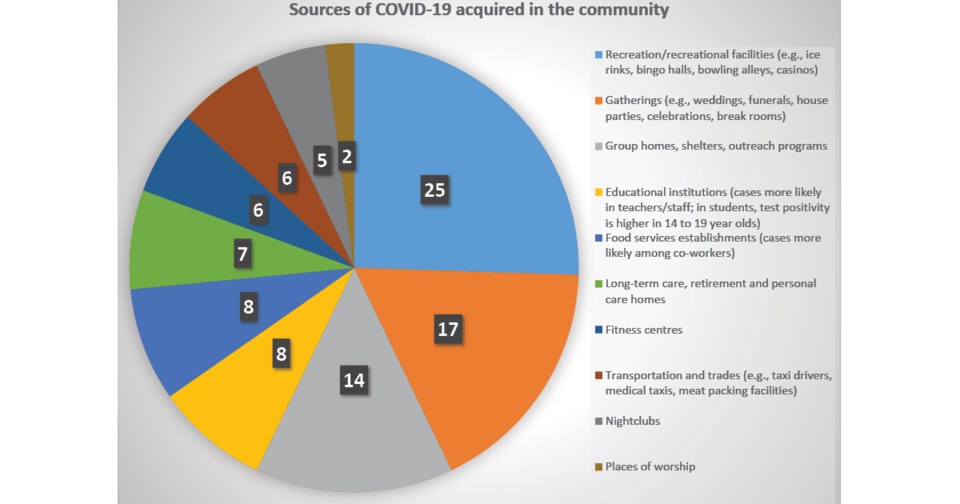The Saskatchewan Health Authority (SHA) broke down where people contracted COVID-19 last week in an update posted online Tuesday.
“Saskatchewan has high rates of community transmission. Case counts, active outbreak investigations, hospitalizations and deaths continue to increase,” the media release said.
As of Nov. 18, the COVID-19 case rate was 104 cases per 100,000 people, which was an increase from 78 the previous week. As of that report Saskatchewan still had the fourth highest case rate in the country behind Manitoba, Alberta and Quebec. Some areas of Canada have higher case rates than areas of the United States. That’s different from the active case count average, which was over 200 as of Tuesday. According to the federal government, the updated active case count per 100,000 population for Saskatchewan is 244 as of Tuesday.
The daily test positivity rate was 6.7 per cent, up from 5.9 per cent last week. The test positivity rate is highest in adults age 20 to 39 and lowest in children under 10-years-old.
The most likely acquisition source continues to be households and close contacts.
The top source for persons who acquire COVID-19 in the community is recreation/recreational facilities such as ice rinks, bingo halls, bowling alleys and casinos with 25 per cent. Gatherings such as weddings, funerals and house parties are second with 17 per cent. Group homes, shelters and outreach programs were third with 14 per cent. Tied for fourth are educational facilities and food service establishments with eight per cent. In educational facilities cases are more likely teachers or staff and test positivity rates for students are higher in the 14-year-old to 19-year-old age range for students. In food service establishments cases are more likely among co-workers.
Long term care, retirement and personal care homes are fifth with seven per cent. Fitness centers and transportation and trades (taxi drivers, meat packing facilities) are tied for sixth with six per cent. Nightclubs are seventh with five per cent. Places of worship are eighth with two per cent.
The common risk factors in all of these is shared indoor airspace without masking, physical distancing and frequent hand hygiene, the province said.



